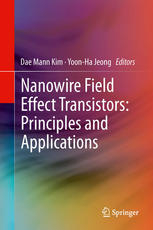Synergy between biochemistry, medicine, and material science during last decade has led to a tremendous scientific progress in the fields of biodetection and nanomedicine. This tight interaction led to the emergence of a new class of bioinspired systems. These systems are based upon utilizing nanomaterials such as nanoparticles, carbon nanotubes, or nanowires as transducers for producing novel sensor devices, or sophisticated drug delivery agents. This chapter focuses on the developments made in the area of silicon nanowire-based devices and their applications in the diverse areas of nano- and biotechnologies. Firstly, the incorporation of silicon nanowires into the electrical circuits is discussed, together with the sensing mechanism of the devices. In particular, the discussion is directed toward the most important aspects of the fabrication and functioning of the sensors, as well as the issues regarding the organic molecules interfacing with the silicon surface. Moreover, the complex interactions of organic species with nanoscale matter are addressed to as well as the need for sophisticated integration and packaging of the subsystems on a single chip. Finally, the perspectives of the potential applications of the silicon nanowires for biodetection and drug delivery are presented. Thus, the concept of "lab on a wire" is introduced as a set of approaches to engineer the nanowires and to enrich their functionality and potential applications in nanoscience and biotechnology.

Synergy between biochemistry, medicine, and material science during last decade has led to a tremendous scientific progress in the fields of biodetection and nanomedicine. This tight interaction led to the emergence of a new class of bioinspired systems. These systems are based upon utilizing nanomaterials such as nanoparticles, carbon nanotubes, or nanowires as transducers for producing novel sensor devices, or sophisticated drug delivery agents. This chapter focuses on the developments made in the area of silicon nanowire-based devices and their applications in the diverse areas of nano- and biotechnologies. Firstly, the incorporation of silicon nanowires into the electrical circuits is discussed, together with the sensing mechanism of the devices. In particular, the discussion is directed toward the most important aspects of the fabrication and functioning of the sensors, as well as the issues regarding the organic molecules interfacing with the silicon surface. Moreover, the complex interactions of organic species with nanoscale matter are addressed to as well as the need for sophisticated integration and packaging of the subsystems on a single chip. Finally, the perspectives of the potential applications of the silicon nanowires for biodetection and drug delivery are presented. Thus, the concept of "lab on a wire" is introduced as a set of approaches to engineer the nanowires and to enrich their functionality and potential applications in nanoscience and biotechnology.
